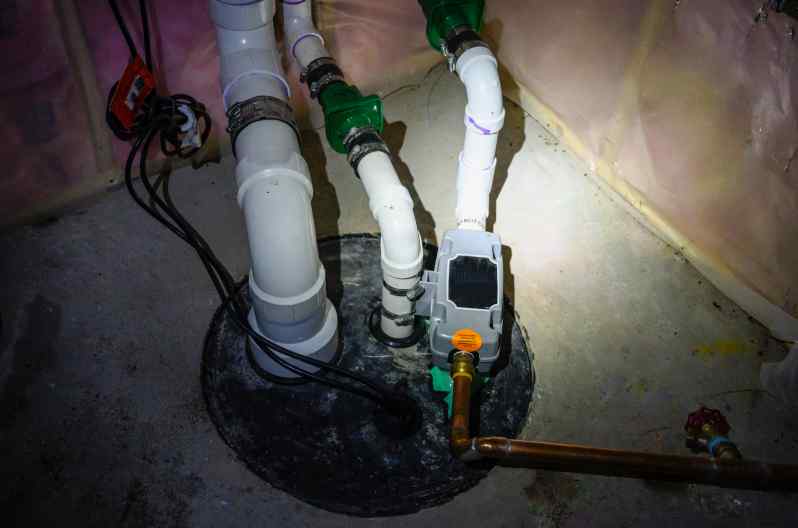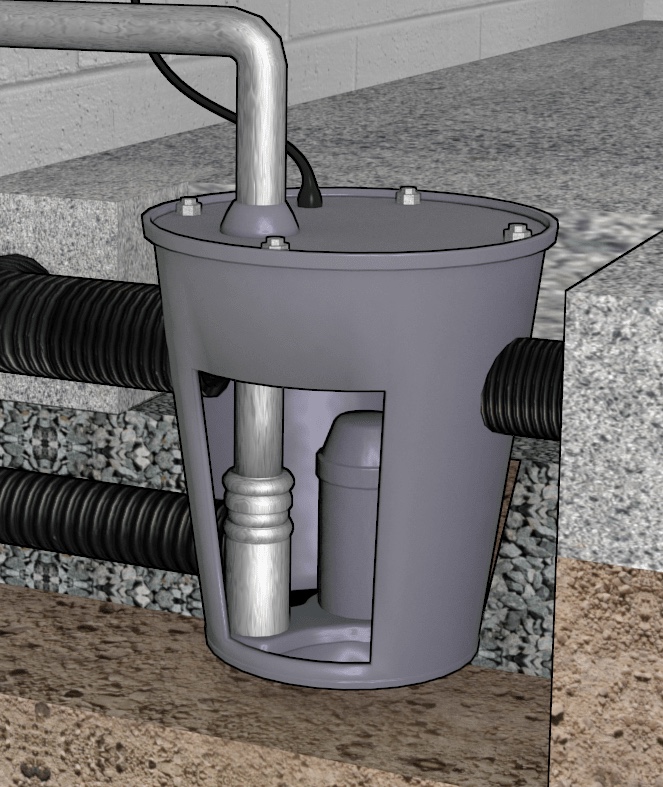
Sump pumps are a great way to prevent your crawl space or basement from flooding. Unfortunately, sump pumps will get dirty and can even clog over time. If the pump can’t remove water from the basin, it will eventually overflow. From monthly sump pump maintenance tips to how to clean a sump pump, we cover what you need to know to prevent water damage in your basement or crawl space.
How to Clean a Sump Pump?
Performing regular maintenance and cleaning your sump pump takes less than an afternoon and will ensure that your basement stays dry throughout the year. If you have a backup sump pump, you should clean and test it as well.
1. Unplug and Disconnect Your Sump Pump
Start cleaning your sump pump by unplugging and disconnecting it from the discharge pipe. Most pumps are connected to the discharge pipe with a rubber sleeve. Use a screwdriver to loosen the sleeve, the pull it off the pipe.
2. Remove the Pump from the Basin
Once it is unplugged and disconnected, remove the pump from the basin. Hold it over the basin for a moment so it can drain. If you’re worried about making a mess, but the pump into a bucket so it doesn’t drip on the floor.
3. Clean the Pump
Use a rag to clean the outside of the pump. If necessary, scrape away grime with a scrub brush. Alternatively, you can take it outside and rinse it off with your garden hose.
4. Drain the Sump Basin
Use a bucket or a wet-dry vacuum to empty the sump basin. Also remove any dirt, stones or gravel at the bottom of the well. They can clog the pump and increase the risk it will fail when you need it most.
5. Remove and Clean the Grate
If your sump pump sits on a grate, remove and clean it as well. Either wipe it down with a rag or spray it with your garden hose.
6. Clean your Sump Pump Basin
Clean the sump basin walls with a rag to remove dirt and grime. While it doesn’t need to be spotless, make sure the drain holes are clear. Cleaning your sump pump basin will also help remove smells as well.
7. Put the Sump Pump Back
Now that it’s clean, you can replace the pump. If you have a grate, put it back as well. Make sure the pump is level and in the correct position to work properly. The float arm should move freely and not touch the basin walls.
8. Reconnect the Discharge Pipe
Reconnect the pump to the discharge pipe and make sure the sleeve is properly tightened. While you should avoid over-tightening the clap, make sure that it won’t leak when the pump runs.
9. Plug-In and Test the Pump
Plug the pump back in, then fill the basin with water until the pump switches on. Watch the pump run to see if there is a problem.
How Often Should You Clean Your Sump Pump?

You should clean your sump pump every three to six months depending on how often it runs. We recommend cleaning it in late winter or early spring as well as in late summer or early fall.
If your sump pump runs a lot during the spring, consider cleaning it again in early or middle summer. You may need to clean it in winter as well if there are frequent thaws and snowmelt.
In addition to sump pumping cleaning, you should also do regular maintenance as well. Test your pump every four to six weeks by pouring in a bucket of water to make sure it runs properly. This will help prevent sump pump failures.
What Type of Sump Pump Cleaner Should I Use?
The best sump pump cleaner is regular household white vinegar. Not only is it inexpensive, but it will remove dirt and prevent smells. Mix together equal parts of water and vinegar, then use a rag to wipe down your sump pump. Use a scrub brush to remove stubborn dirt or grime.
If you see mold or your sump pump has a strong smell, you can use bleach instead of vinegar. Mix a quarter cup of bleach in a gallon of water and clean the sump pump and the basin with a rag. Once you put the sump pump back together, add another quarter cup of bleach to the basin to control odors.
Monthly Sump Pump Maintenance Tips
In addition to your yearly sump pump maintenance, you should also perform monthly check-ups to ensure it works when you need it most. Always unplug the pump before making adjustments to the pump to prevent injury.
- Normal vibrations can cause the pump to shift and may prevent the float arm from working properly. Make sure it is in the proper position in the sump basin.
- Check that the pump runs properly. Pour in a bucket of water until it runs. While you can pull the float up instead, running it too long can damage the pump.
- Look at the power cord for frayed wires and cracked or worn sheathing. Replace the power cord if it is damaged.
- If you have a ground fault circuit interrupter (GFCI) outlet, trip and reset it to ensure it works properly.
- Pour in one cup of vinegar or one-quarter cup of bleach to remove smells and kill bacteria.
- If you have a backup, test it as well to make sure that it works properly.
Frequently Asked Questions About Sump Pump Maintenance and Cleaning
Here are some of the most asked questions about cleaning and maintaining a sump pump.
Do sump pumps need maintenance?
Yes, sump pumps do need maintenance. You should test your sump pump every four to six weeks and clean it every three to six months.
How often should you clean your sump pump?
You should clean your sump pump every three to six months depending on how often it runs. If it only runs occasionally, cleaning it twice a year is fine. If your pump runs more often, you should clean it more often.
Can I pour bleach in my sump pump?
Yes, it is safe to pour bleach into your sump pump. This used to be a concern with old cast iron pump models, but bleach will not damage newer pumps.
How much does it cost to clean a sump pump?

If you clean it yourself, it only costs a few dollars to clean a sump pump. It’s easy and only takes a few hours. If you hire someone to clean your sump pump, they will usually charge anywhere from $65 to $130.
